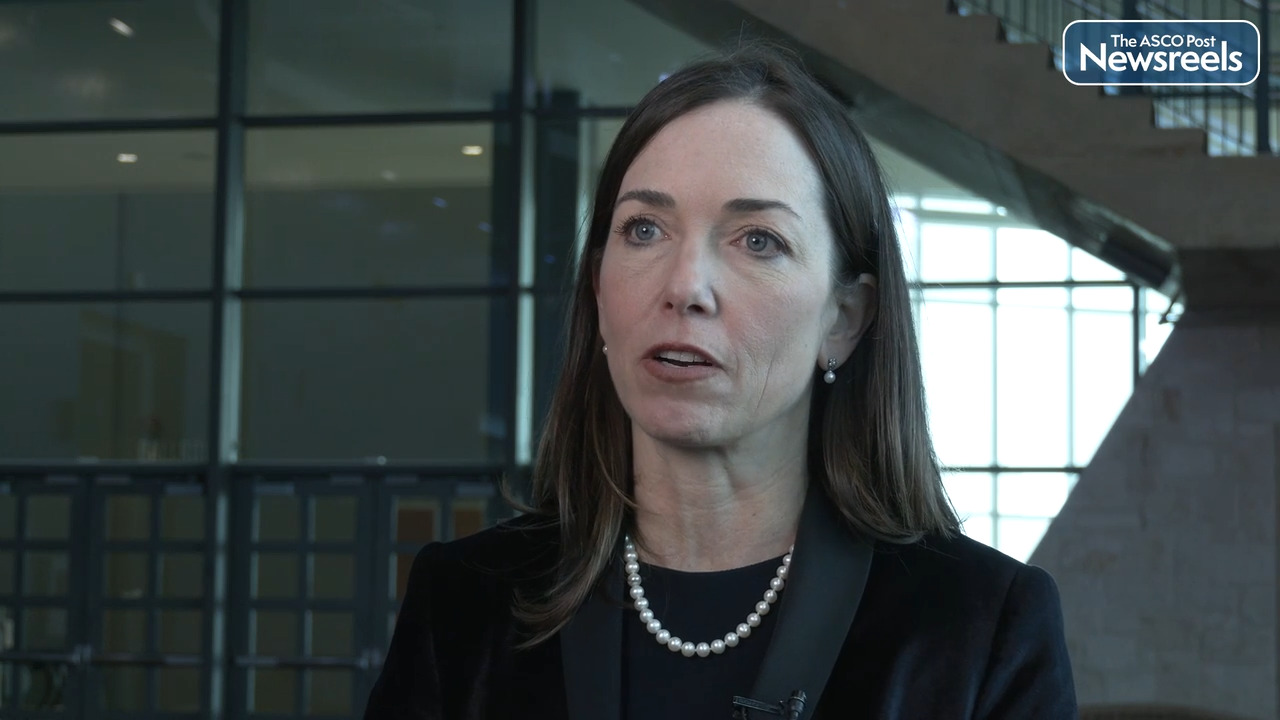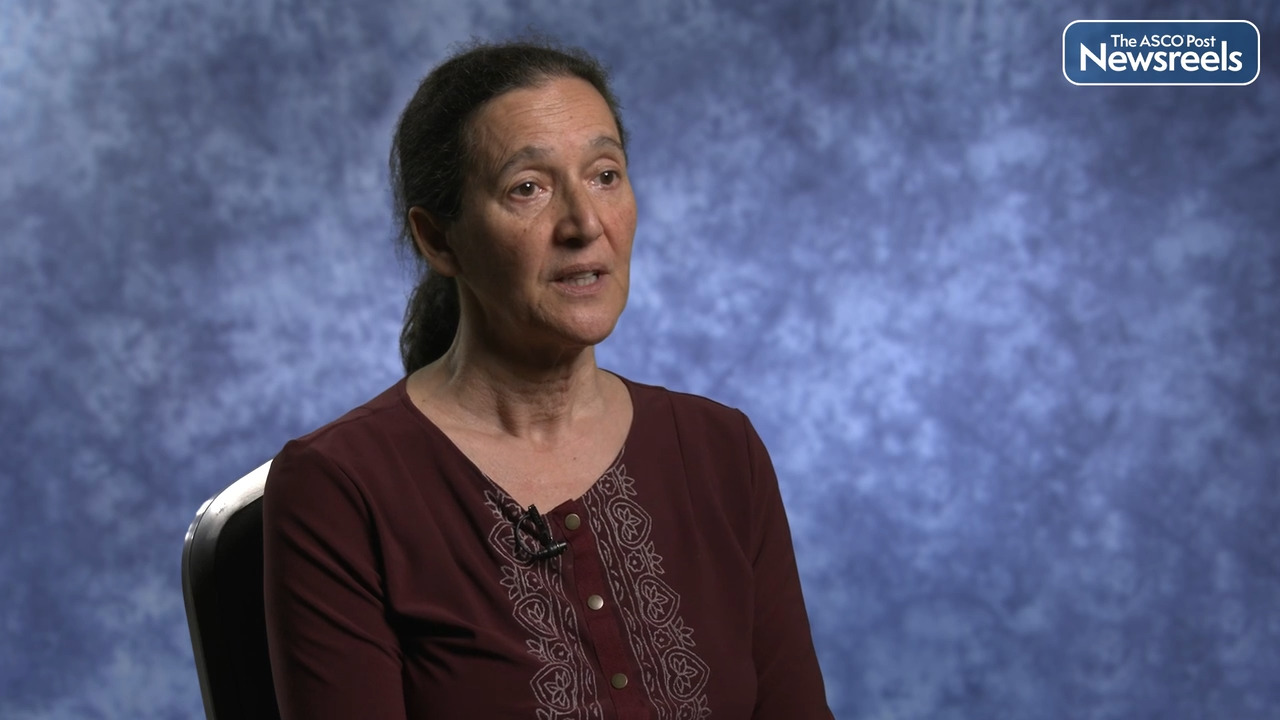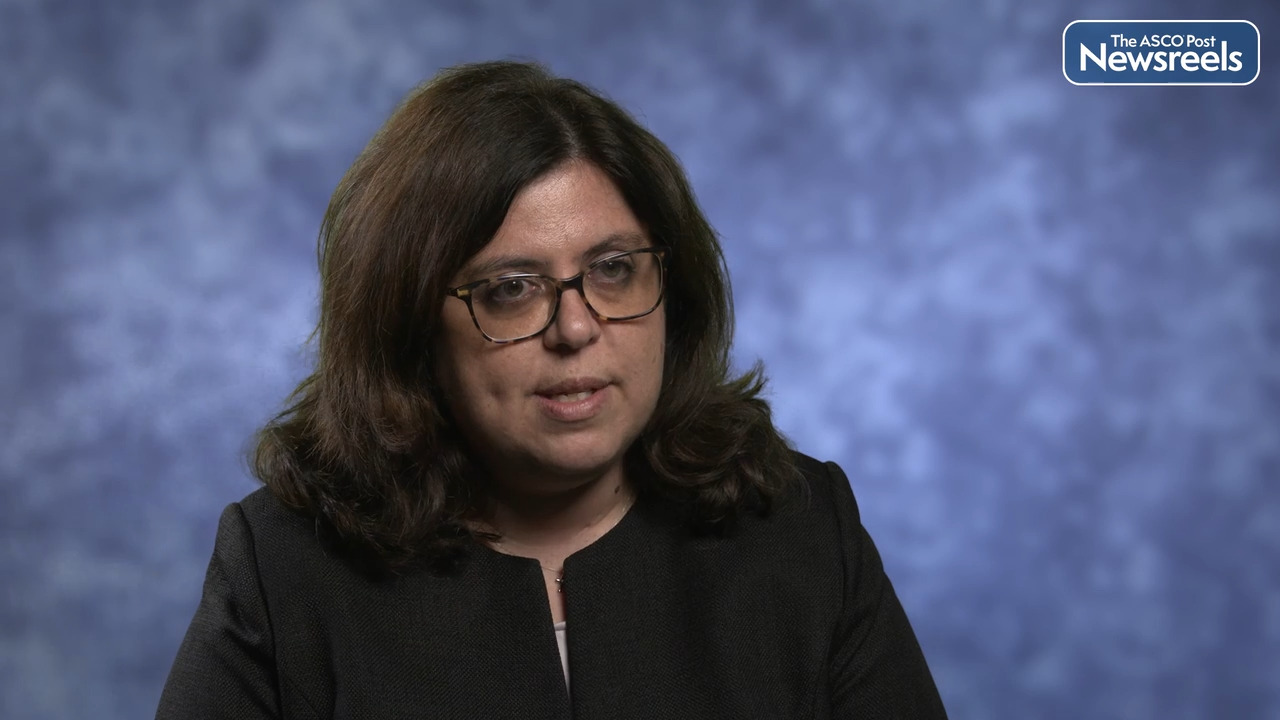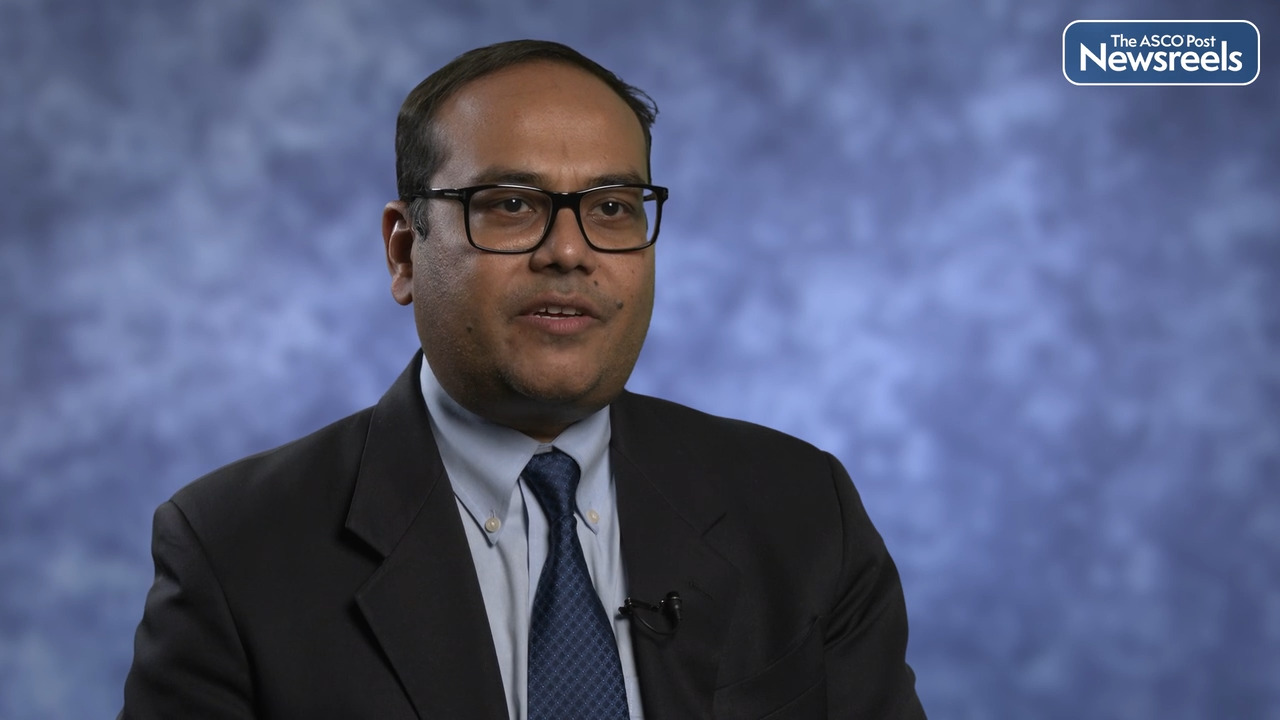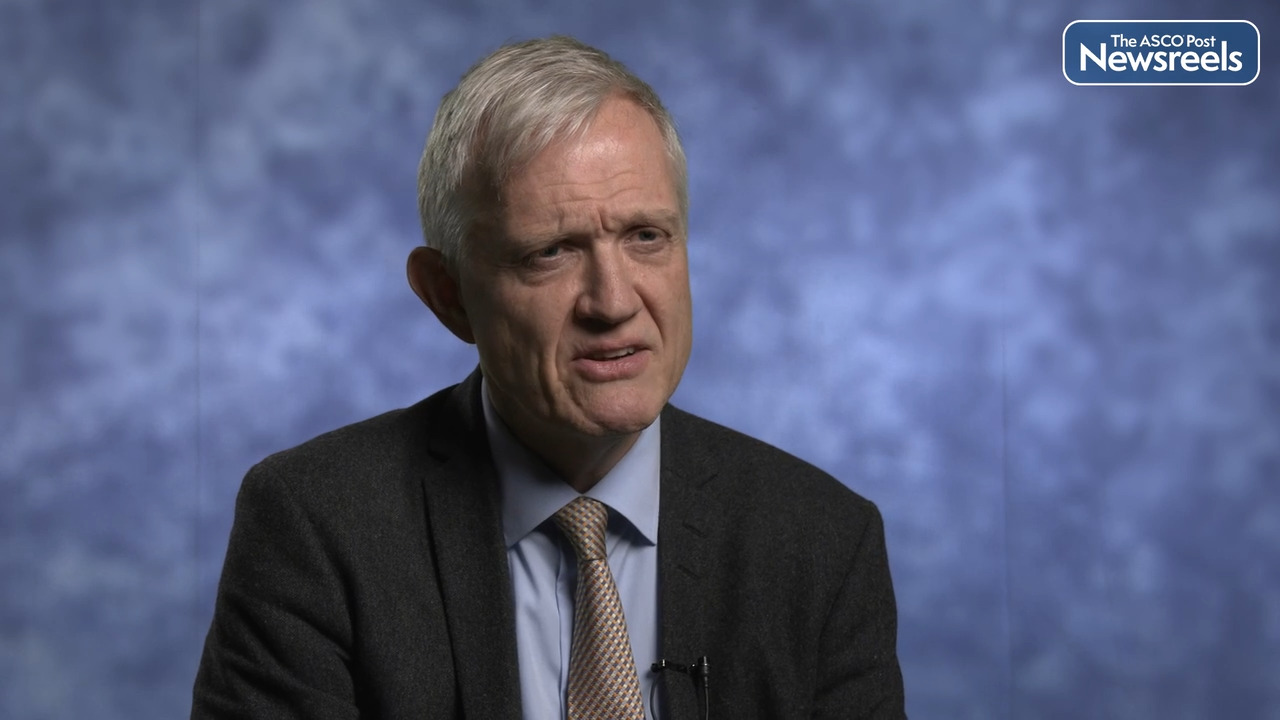Sara A. Hurvitz, MD: New Findings on Neoadjuvant Trastuzumab Deruxtecan and Anastrozole in Early-Stage Breast Cancer
2022 San Antonio Breast Cancer Symposium
Sara A. Hurvitz, MD, of the University of California, Los Angeles, Jonsson Comprehensive Cancer Center, discusses phase II results from the TRIO-US B-12 TALENT study, which showed that patients with localized, hormone receptor–positive, HER2-low breast cancer who are treated with fam-trastuzumab deruxtecan-nxki (T-DXd) in the neoadjuvant setting had an overall response rate (ORR) of 68%. When combined with anastrozole, T-DXd led to a 58% ORR. This is the first trial to evaluate T-DXd in HER2-low breast cancer, a potentially curable disease (Abstract GS2-03).
Transcript
Disclaimer: This video transcript has not been proofread or edited and may contain errors.
The TRIO-US B-12 TALENT Clinical Trial was a study aimed to investigate the activity of TDXD, either alone or in combination with endocrine therapy in hormone receptor positive HER2 low breast cancer in the neoadjuvant or curative setting. So treating patients prior to surgery.
Why is this important? We know that patients with hormone receptor positive breast cancer treated with neoadjuvant therapy have a very low chance of achieving a pathologic complete response, and even a low chance of a good objective response to therapy, even with multi-agent chemotherapy or CDK-46 inhibitors and endocrine therapy we're not getting great outcomes.
TDXD has demonstrated significant benefits in the metastatic hormone receptor positive, HER2 low phase from the Destiny Breast 04 clinical trial, but has not yet been tested in the early stage setting in hormone receptor positive HER2 low disease. So we conducted a very early phase, phase two clinical trial where patients were treated with TDXD alone or with TDXD with anastrozole. Patients had to have stage two or three early stage breast cancer that was ER positive and had to have centrally confirmed HER2 low expression. We evaluated patients and then treated them with six cycles of TDXD, either alone or with anastrozole. And then after we enrolled about half the patients and began to see some near pathologic complete responses, we amended the protocol and extended the length of therapy to eight cycles.
We presented at San Antonio our interim data, very preliminary evidence of activity and our observations of how this drugs or drugs work together in this setting. We showed that there was an objective response rate of 68% with TDXD alone and 58% of TDXD plus endocrine therapy from baseline to the time of surgery. So this is an objective response rate. It's important to note the denominator includes patients who haven't yet completed therapy or who came off therapy early. This objective response rate is somewhat kind of like what we saw in the Destiny Breast 04 clinical trial. We also saw one patient have a pathologic complete response, and we saw an additional four patients have a near pathologic complete response in RCB one. So the data are very intriguing. We are still waiting for surgical results from 24% of the patients treated with TDXD and 31% of the patients treated in the combination arm. So it's too early to call a PATH CR rate. But the data that we got, it's very intriguing.
It's interesting, and it is allowing us to look at the biomarkers, what's happening to HER2? What's happening in the tumor microenvironment as we treat with TDXD, with or without endocrine therapy.
Next year, we plan to report the final results, and I think these results may help inform the design of studies of TDXD in the early stage setting for HER2 low disease.
Related Videos
The ASCO Post Staff
Sara A. Hurvitz, MD, of the University of California, Los Angeles, Jonsson Comprehensive Cancer Center, discusses phase III findings from the DESTINY-Breast03 study, which showed that second-line treatment with fam-trastuzumab deruxtecan-nxki (T-DXd) led to longer overall survival compared with ado-trastuzumab emtansine (T-DM1) in patients with HER2-positive metastatic breast cancer. Patients treated with T-DXd had a 36% lower risk of death than those treated with T-DM1 (Abstract GS2-02).
The ASCO Post Staff
Prudence A. Francis, MD, of the Peter MacCallum Cancer Centre, discusses an update of the SOFT trial, which showed that adding ovarian function suppression (OFS) to adjuvant tamoxifen for premenopausal women with estrogen receptor (ER)-positive breast cancer reduces the risk of recurrence. OFS enables the use of adjuvant aromatase inhibitors as an alternative to tamoxifen, which can further reduce recurrence of ER-positive, HER2-negative disease. Very young women—those younger than 35 years old—should be considered for OFS, according to Dr. Francis. In addition, tamoxifen alone is appropriate in women with low-risk clinical-pathologic features.
The ASCO Post Staff
Mafalda Oliveira, MD, PhD, of Spain’s Vall d’Hebron University Hospital and Institute of Oncology, discusses findings from the SERENA-2 trial, which compared the next-generation selective estrogen receptor degrader camizestrant to fulvestrant in patients with hormone receptor–positive, HER2-negative breast cancer. Camizestrant, which can be taken as a daily pill (as opposed to fulvestrant, which must be given via injection), improved progression-free survival by up to 42% (Abstract GS3-02).
The ASCO Post Staff
Aditya Bardia, MD, MPH, of Massachusetts General Hospital, discusses results from the phase III EMERALD trial, the first study to demonstrate improved progression-free survival vs standard of care in estrogen receptor (ER)-positive, HER2-negative metastatic breast cancer with one to two prior lines of endocrine treatment, with or without one line of chemotherapy. This finding applied to all patients in the study, including the subgroup with ESR1 mutations (Abstract GS3-01).
The ASCO Post Staff
Per Karlsson, MD, PhD, of Sweden’s University of Gothenburg and the Sahlgrenska Comprehensive Cancer Center, discusses results from the POLAR study, which was a meta-analysis of three clinical trials of breast-conserving surgery with or without radiotherapy. POLAR is the first genomic classifier that appears not only to be prognostic for locoregional recurrence, but also predictive of radiotherapy benefit. Although patients with breast cancer who had a high POLAR score benefited from radiotherapy, patients with a low score did not, and may be candidates for omission of radiotherapy after breast-conserving surgery (Abstract GS4-03).
